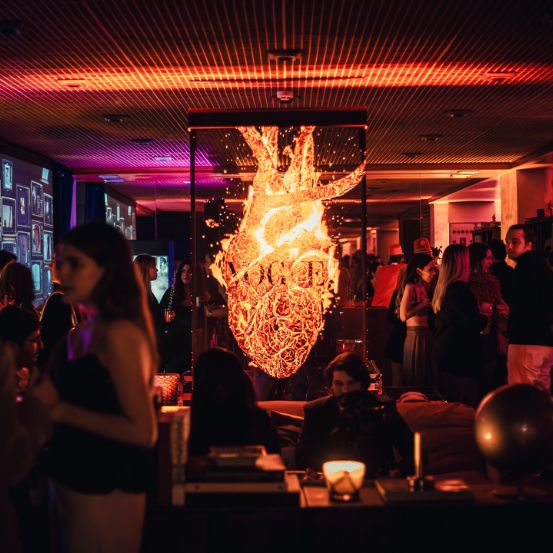The Memories Issue
If it were of minor importance, the ability of certain flavors to produce memories that were thought to be lost wouldn't be worth talking about for hours. But there's something even more fascinating. Because "Do you remember the smell of bread coming out of the oven?" is commonplace. But "What about that awful syrup when we were sick? How I miss that..." requires us to look into the matter.
Except for the trips we made to Sines and Leixões to rescue my boarding father from the ship, the prison where he spent half the year, the family journey was more than likely saved for the end of the summer when the Alentejo heat was more bearable. Because, on my mother's side, some spent the entire summer guarding a very large meal, staying overnight in a kind of makeshift hut made of boards and a roof made of eucalyptus branches. Ask me if, in either situation, I remember any detail, however vague, of the landscapes along the bumpy national roads. I immediately answer no. Perhaps a stork's nest outside. Maybe the black nappa interiors of the Datsun 100A. But I remember perfectly the taste of the slices cut in Alcácer do Sal, on the way to the Port of Sines, the fried squid in a restaurant in Leça, the Quality Street bonbons (the tin of which was invariably destined for sewing items), the Carte d'Or chocolate bars and the Compal de Tomate that my father brought on board (his job in the crew was that of steward, so yes, I was privileged). Of the Alentejo, which at that time was deep (because today Ermidas do Sado is already there, the fourth on the right after Canal Caveira in the direction of the Algarve), the memory of the gold tones that covered everything, of the dust that the car raised until it reached the little shack where my family spent the whole summer, is fuzzy, a huge makeshift awning, the joy of our arrival and the mornings when the sun was already beating down and I, by my grandfather's hand, would run around the field in search of "chopped" melons (the Gitanos - or Maltese, as my ancestor called them - would cut a square in the face of the fruit to taste it to see if it was ripe). It was one of these that we used to take under a chaparro (which happened to be a holm oak, not a cork oak) and, with the quarter of a loaf of bread it carried in its taleigo (a linen bread bag with the word "bread" embroidered on it), it was our breakfast. That's what I remember best. The taste of bread, salty and sour like never before, combined with the sweetness of an orange-fleshed melon. On the way back to the makeshift shelter, my aunt would catch one of the free-ranging chickens (a Pedrês, a cream layer, much to my mother's shock) and kill it (the smell of the bird being plucked in hot water is also part of my olfactory memory). The blood was used for cabidela rice, of which I remember the vinegar scent. But only rice. Because the meat was destined for a tomato sauce with potatoes, to "give vent" to so many tomatoes that hit the Alentejo at the end of summer and whose final destination is invariably the many jars of jam that fill the pantry for the winter. All of these are flavors that I not only remember but that are ingrained in my skin. The power of olfactory or tasting memory is to produce incredible sensations. And let's face it, we're here for nothing more than to experience incredible sensations. Sometimes you don't have to climb Mount Everest or go bungee jumping!
It won't be news to anyone, but if you've been distracted, I'll tell you right now that humans govern their lives through their five senses. Like any other animal, including those commonly referred to as non-rational, our senses are awakened and put to the test at an early age and it is at this time that great discoveries are made. But it's also the best time to heal over which of our senses is the most important. Which one could we not bear to be deprived of? Sight? Touch? Because it's not very pleasant to remember, I'd like to remind you that many of us spent many days without our sense of taste and smell, due to COVID. And long days are one thing, but the rest of our lives will be another. Even so, to avoid one of those discussions in which no conclusion will ever be reached, we've given each sense importance according to its ability to trigger memories. Let's look at a baby on the beach who feels the sand for the first time. Its first instinct is to put it in its mouth. "Then I'll try it!" Then there's the fact that hardly anyone will remember the first time this happened in their life. It's much easier to remember the first time you tasted your grandmother's Bacalhau à Brás. If we want to explain the relationship between the palate and memory in a much less empirical way, the undeniable fact is that during childhood we are exposed to a variety of new and therefore exciting flavors. All of this tends to leave a lasting impression on the memory, a possibility that is redoubled if it is associated with an event that brought comfort or happiness. It is during childhood that the palate develops and, as a result, food preferences are determined that will last a lifetime, forming because there are associated emotional connections. The taste of a dish made by a grandmother or mother, which is associated with a happy moment, can be dormant in the memory for dozens of years. Until, with children and grandchildren, we taste it again. At that moment, the taste cortex transmits to the limbic system (a network of brain structures that regulates emotions, behavior, and memory), and a reaction of pure joy is triggered. The opposite also happens when we taste something we dislike, because of its flavor, consistency, or even because it has an unpleasant memory associated with it. I, for example, hate vinegar because I drank it in one gulp thinking it was apple Trinaranjus. When it comes to consistency, I can't stand milk because I associate it with that film of cream that fell to the surface, from the days when pasteurization was done at home, in an aluminum pot on the stove. But if it's with honey... Because it reminds me of the comfort I used to get from the steaming mug my mother used to hand me when I had the flu. The same goes for why chicken soup is still my favorite soup today. It was the first thing I could put in my mouth after a days-long fast dictated by high fevers, with a gigantic mint sauce to "kill the peckishness", in my mother's words.
In the 1980s, sitting in the seats of the big cinemas in Lisbon or even in those that existed in the basements of suburban shopping malls, we looked at a screen where, far away, everyone was eating hamburgers and pizzas. We didn't know what it was. Our hot dog was two tinned sausages cut in half, fried in margarine, and inserted into a butter-smeared pat, to which we added a "mustard condiment" that rhymed with "the taste that makes everything better". One day, I discovered that there was an establishment on the Costa de Caparica called Sandwich Bar, which made the iconic brioche bread sandwich with a disc of minced meat, a slice of melted cheese, and, far removed from the days of caramelized onions with port wine in the hamburger restaurants on the corner, on the avenue and in the boqueirão, it was fried in the fat that the meat left on the griddle. And it was only a few years ago that I discovered that this was, in fact, the first hamburger restaurant in Portugal, as if Caparica had ever been the epitome of the Lisbon vacationer in the 80s. I was 14 years old. But if, these days, I need a serotonin injection or a nostalgia pill, that's where I sit and taste something that still tastes the same today. I don't know if that's a good sign. But as I've never sent CVs to ASAE, nor would I be particularly happy to make a career out of destroying family businesses because of grease on the walls, these are things that don't concern me, although I do have a secret desire to one day visit the kitchen of an ASAE inspector's house, just for the sheer pleasure of being able to recite the folk saying "In a blacksmith's house, a wooden skewer", which can't even be made of laurel, according to ASAE's commandments.
I also remember, even younger, a carnival in Sobral de Monte Agraço, where late at night my father was still drinking wildly with a comrade who had served with him in the Guinea War, perhaps exorcising ghosts, and forgot that I hadn't eaten since lunch. My memory is of everyone dancing wildly and me, static, staring at a poster of Tonicha, fascinated. But above all that was the aroma of bifanas.How could that whet my appetite when I had never tasted such a snack? I don't know. But everything that happened next is still projected in this humble brain as if it had happened five minutes ago, while I was writing that paragraph above... I pulled on my father's pants, and exclaimed "I'm hungry", that look of guilt and urgency at the counter, and then the combination of the taste of a bifana and Fruto Real, Sumol's older brother. Even today, I'm the butt of jokes when I'm the only one who doesn't accompany the iconic "Pork in a bun, what's there not to like?" sandwich, as Anthony Bourdain called it, with beer. Because, if eating is, or should be, a moment of added pleasure, we all know, except for those who have been very unlucky in life, that pleasure comes in many forms. Of course, an avant-garde creation by a Michelin-starred chef can produce unparalleled satisfaction, but so can a steak of boiled forkbeard, to my very exacting taste. But if any of the flavors that make up a dish bring back memories of the roast chicken we only ate at home during the quarter because "they have hormones", of the chickpea soup from my secondary school, of the chicken wings when it was time to "tighten our belts", the chicken spaghetti from kindergarten, the "bacalhau à brás" (salt cod) with freshly fried potatoes, the swordfish roe that Zé Albano, my father's work colleague, "pxíte" (sesimbrense) with all his heart, saved by the kilo to give to us, from cookie sandwiches with butter oozing out of the little holes, things take on a whole another dimension.
I've taken the liberty of offering you, from everyone and for everyone, a kind of final Ferrero Rocher. Because I asked my closest friends and family circle what tastes and smells, as long as they were related to food, were capable of transporting them to another time in their lives. The conclusions would make a treatise on transversality. The smell of freshly baked bread and cakes still inside, spreading throughout the house, won this election by a large majority. But just below them is a series of coalitions that reflect their age group, the environment in which they grew up, and the land that saw them born.
Marta Pimpão, producer of Óbidos sour cherry (the only real one, which only began to have its label when she stopped supplying the Rossio and Portas de Santo Antão establishments in the 1980s), recalls her childhood in the village of Sobral da Lagoa, the hot bread with sugar, roasted sweet potatoes, rice soup, the aroma of must in the wine press, stewed wild rabbit, snails roasted in a paint can lid, chocolate pudding from Boca Doce and its impossible-to-dispel lumps, Flemish cheese balls, of which she only ate the rind (WTF, Marta! ) and Grandma's sponge cake. Carla Silva Santos, editor-in-chief of the most popular magazine ever in Portugal, whose childhood was divided between stays in Figueiró dos Vinhos and a remote village in Alentejo, remembers the mixture of oregano aromas, lemon balm, and lemongrass drying in the barn and the taste of Tang, Tulicreme caramel, fried egg with sugar in the yolk, coffee made in the "chocolateira" (cup, in Alentejo), spaghetti with butter and lemon, Maizena flour porridge with lemon peel, Dr. Bayard's sweets, popias, etc. Bayard sweets, popias, fennel horseshoes, and, in the bad, natural yogurts made in that yogurt maker that was the Bimby of the 80s, the syrup in a brown bottle that is transversal to my generation, unlike cod liver oil, which her father made her take because, in his time, it was compulsory at school. Miguel Somsen, a copywriter for TVI and a journalist who is well versed in music and cinema, who was a child 50 years ago, can organize the memories of meals at home just by the flavors he still remembers today, such as hake fillets, stewed meat, spaghetti with meat and ketchup. Away from the table, he remembers with nostalgia the condensed milk he would "steal" from the neighbors' house, the eggnog with lots of sugar, Cerelac and Pensal flour, Nestum Figo, sodas from countless brands and Spur Cola, from Canada Dry. Frederico Almeida, a friend of many years and one of the people I know who is most attached to his origins in the remote village of Ranhados, remembers the chocolate bar sandwiches, the fradinhos (a type of mushroom) roasted in the braça with coarse salt, the hot mashed potatoes with pieces of cold ham and the homemade chorizo sausage that was roasted in silver on the mantelpiece. From his days as an immigrant in France, he remembers the homemade crepes and yogurts he always finished his meals with. Marco Santos, who also grew up in France, has fond memories of the Galette des Rois, the French Christmas king cake, made of puff pastry and filled with almond paste, which was made at his home and which he would "gorge himself on" (in his own words) until he was sure he couldn't eat anything else. Gonçalo Santos, a Lisboner from Praça do Chile, remembers the time when carcasses were called papo-secos and came with pieces of coal embedded in their base. The very Lisbon aroma and taste of chestnuts roasting in the street, the smell of Christmas fritters with cinnamon, which began in mid-December, and everything that, on Sunday, the "oven day", simmered inside, which could range from lamb to redfish, ensuring that, in those days, redfish was really good and on which he continues to bet, but without being able to match the sensation. Cátia Maurício, who for years was the front girl for Everything Is New and then Sony Music Portugal came to her grandparents' Bairrada from Angola as a young girl. She remembers the taste of her grandmother's suckling pig, thyme rice, freshly baked bread, moamba made by her mother and mangoes brought back from Angola by her uncle. Growing up in Bairro Alto, Sara Marques would arrive at her grandfather's house, a prominent fado singer at Adega Machado, at times when she knew he was drinking his Strawberry Toddy and the coffee was on the stove next to the toaster. He was never able to match the taste of his grandmother's Easter puffs or Sunday stews. My mother, Ti Natália by name, remembers breakfasts taken at the top of a fig tree, made from freshly plucked fruit and "pão de 17", a term used in the Alentejo Profundo to describe bread that is several days old and is already good for "soups", migas or açordas. Impossible to reproduce today is the "cricket butter" (lard that is fried meat seasoned with paprika paste) with which she spreads her toast or the taste of tomato rice, which was a dish in itself. She remembers, as I do, the aroma of fried fish in my grandmother's house. I remember, and perhaps my mother too, so I'm making a desperate plea to anyone who might still know where to find them, for the extinct cockle rissoles. For the sake of the bellyfuls of cockles I used to eat during the whole days spent at the Lagoa de Albufeira, forcing me to wait three hours for them to digest, during which time I would crack (and eat) pine nuts from the leafy stone pines, a taste I can only reproduce today if I can decide between that and Caviar Sevruga at the supermarket.
Originally published in The Memories Issue, from April 2024. Full stories and credits are in the print version.
Most popular


Relacionados
.jpg)


LightHouse Publishing x Street Smash Burgers: uma noite no escritório da Vogue Portugal
19 Dec 2025
 (14).png)



